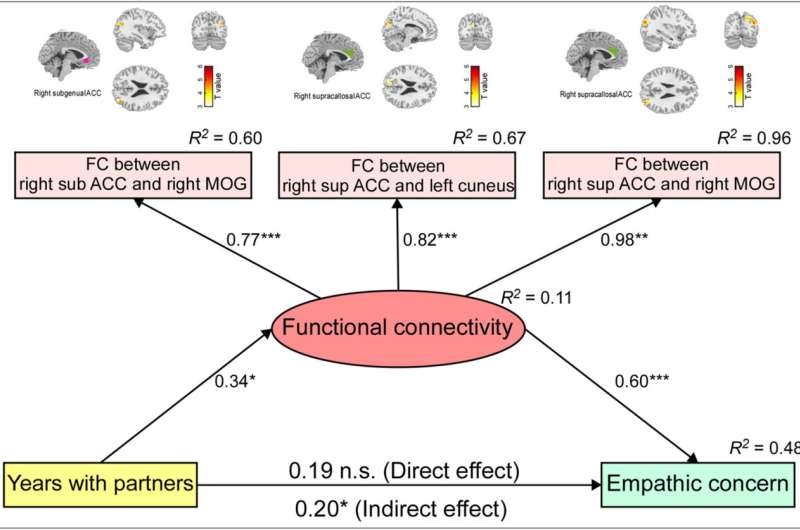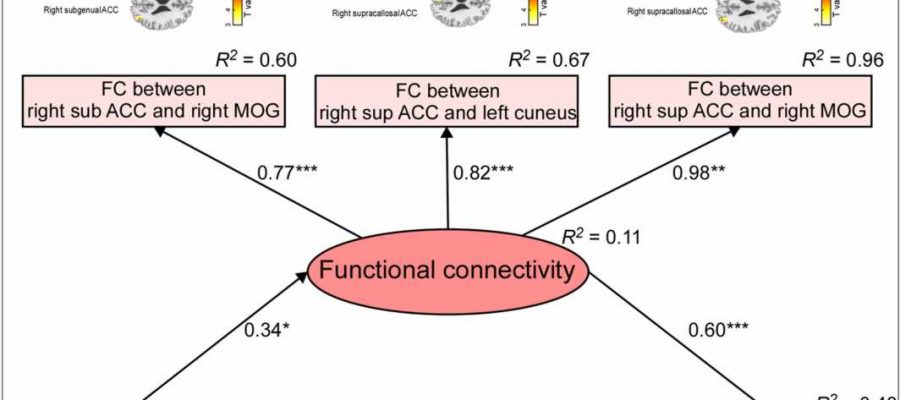
Ballroom dance is a form of art and sport that helps improve sensorimotor skills, cognitive levels and emotional communication. To achieve high-level performance, dancers need to collaborate, imitate, and actively interact with their dance partners through long-term training. In this way, they are continually involved in understanding and sharing their partner’s thoughts and feelings—this is what we call empathy.
A research team led by Dr. Hu Li and Dr. Kong Yazhuo from the Institute of Psychology of the Chinese Academy of Sciences has found behavioral and brain mechanism evidence that empathy is promoted with long-term ballroom dance training.
In their exploratory study, 43 professional ballroom dancers and 40 age- and sex-matched controls were recruited from Beijing Sport University. During the experiment, participants’ demographic information, art and sport training information, and romantic relationship information were collected. Their trait empathy, personality and interpersonal relationship were assessed using self-reported empathy scale, self-reported personality scale, and self-reported interpersonal scale.
High-resolution structural magnetic resonance (MRI) images, and resting-state functional MRI images were also collected to reveal the neural correlates of empathy.
According to the researchers, among the three subscales of empathy (perspective taking, empathic concern and personal distress), dancers showed significant higher scores than controls in empathic concern. Furthermore, the empathic concern was positively correlated with years with dance partners (i.e., the number of years that the dancer has officially danced with a fixed dance partner).
Empathic concern is an other-oriented affective empathy and involves the desire to promote others’ well-being or alleviate their suffering, which is widely regarded as the trait that motivates costly altruism and prosocial behavior.
So how did dance training enhance empathic concern in the brain? Analysis of brain structures revealed that gray matter volume of the subgenual anterior cingulate cortex (ACC) was significantly associated with empathic concern and years with dance partners.
Most importantly, the functional coupling between the ACC and the occipital gyrus plays a key role to mediate the relationship between years with dance partners and empathic concern, i.e., the longer dance partners train together, the more engagement between empathy-related brain regions, and eventually more concern for other people develops.
This study reveals the close relationship between long-term ballroom dance and empathy, and its underlying brain mechanisms based on the structure and function of the ACC, which provides novel insights into the improvement of empathy.
Source: Read Full Article
